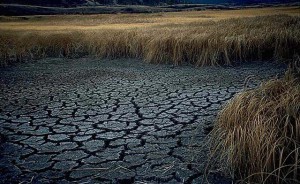Impact of California’s Drought on Water Rights
California is in the midst of its fourth year of one of the most severe droughts on record. A drought State of Emergency has been called by Governor Brown and imposed strict conservation efforts statewide. While water conservation efforts have been monopolizing the headlines in most local and state newspapers, the fight over water rights, both surface and ground, have been garnering more and more attention.
Riparian rights determine how water is allocated among those who possess land along its path. Typically, the rights belong to landowners whose property the natural waterway runs, whether it’s a stream, creek, or river. In California, riparian rights are determined by a doctrine known as “prior appropriation.” Under this doctrine, the first person to take a quantity of water from a water source for agricultural, industrial, or household use, has the right to continue to use that quantity of water for that purpose.
In mid-June, the state of California reduced the water usage of farmers with rights to California water dating back more than one-hundred years. In an average year, agriculture use in California amounts to about eighty percent of all of the water consumed on the state. Since the drought began, farmers in the Central Valley have had their water usage drastically reduced incrementally each year.
However, this cut could have devastating consequences for farmers who rely on water to feed their crops and support their businesses. Only once in the history of California have people with the most senior water rights been affected by droughts. Farmers have anticipated that this may happen and as a result have been digging new wells for groundwater. Despite the stress it will put on farmers, California has no choice. Litigation is expected by farmers to fight for their most senior water rights as we move into fall with no rain in sight.
Marijuana Could Destroy California’s Water Supply
While there is no doubting that the California drought affects all of its citizens, environmentalists are scrambling to protect precious and valuable ecosystems that are slowly being destroyed by water diverting tactics of marijuana growers. The marijuana industry in California produces up to seventy-percent of the marijuana consumed in the United States.
However, the marijuana industry remains largely unregulated. There are few protections to ensure that illegal water diversions for marijuana growing farms don’t dry up rivers, destroy salmon and steelhead habitats. Although not legal, the debate over whether or not to legalize marijuana is more amplified as marijuana growers develop extensive plots along California’s most sensitive habitats. A single marijuana plant demands substantial water to grow and since this industry is unregulated, most water to feed the plantations is taken illegally. These diversions have drastically reduced many parts of California, including stretches of the Eel River and many of its tributaries affecting salmon and steelhead habitats, as well as affecting the water supply that wildlife in the area rely on. The diversions have become so extensive that even legal water users in the area don’t have enough water because of marijuana poachers.
While legislation regarding water rights and marijuana growing is making its way through the legislature, environmentalists and concerned citizens are hoping for a more expeditious solution to the problem before marijuana growers permanently destroy sensitive habitats forever.


Comments